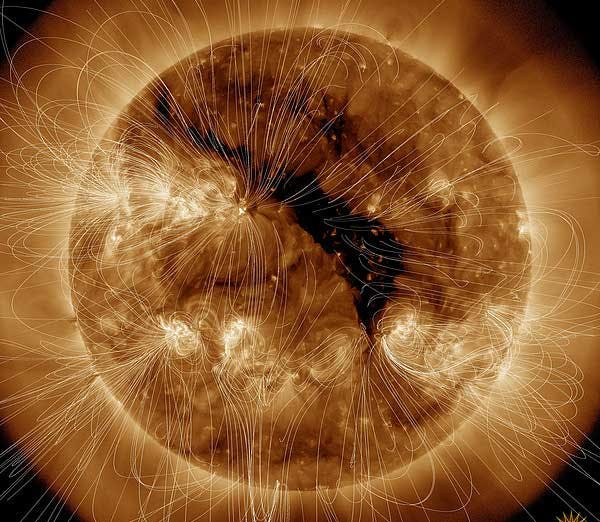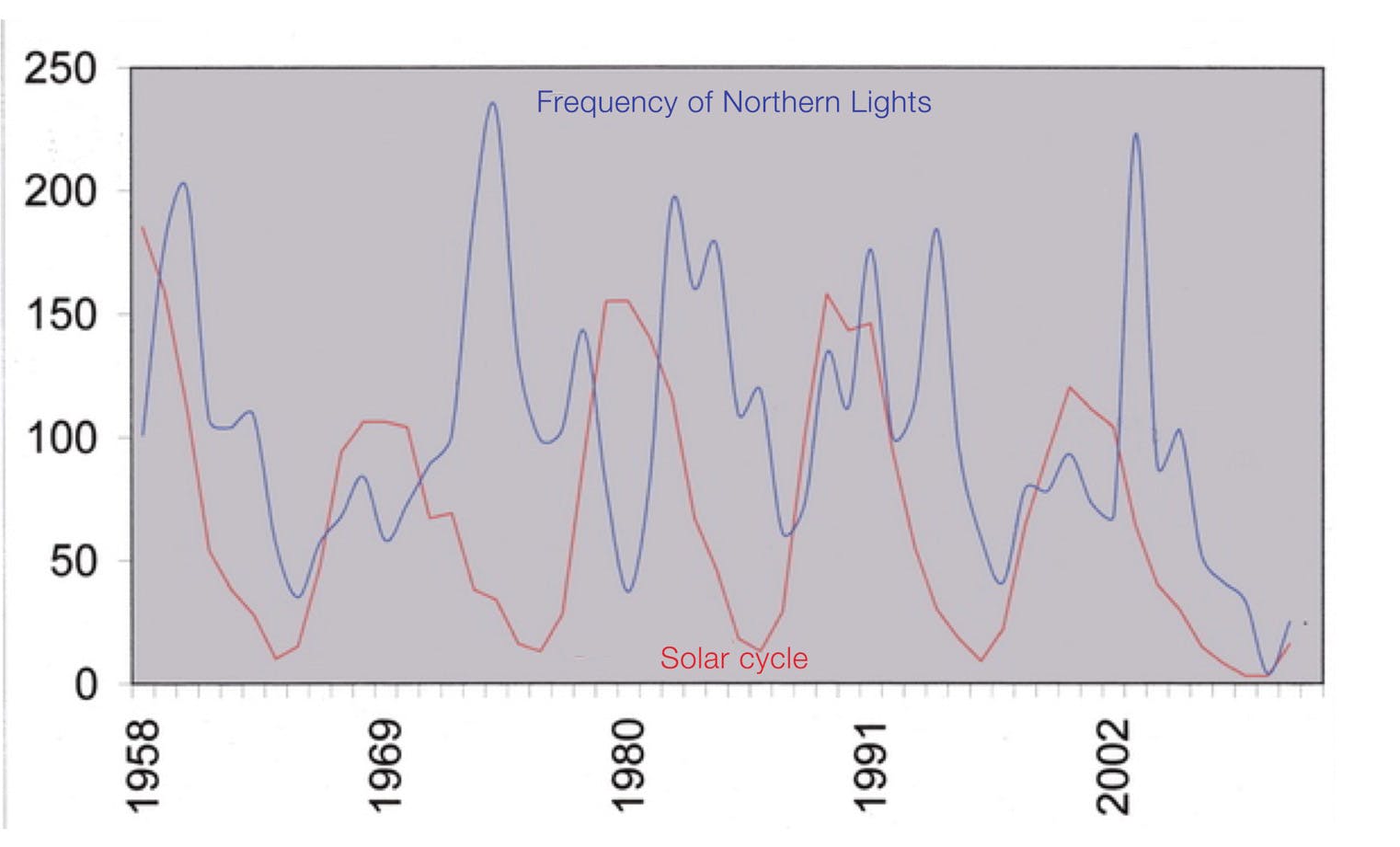What are coronal holes and why are they important for northern lights?
Coronal holes are openings in the Sun's magnetic field from which high speed solar wind streams originate. High speed solar winds from coronal holes cause bright, active and recurrent Northern Lights.

Coronal holes are areas in the Sun's corona where the magnetic field lines are open, allowing solar particles to flow freely away from the Sun into space. One can picture it like water streaming out of a lawn sprinkler, or perhaps like the beams from a lighthouse. If Earth happens to be in a sprays way, geomagnetic storms can occur with beautiful Northern Lights displays that can last for multiple evening - and can repeat at 27 day intervals.
The solar wind flows constantly from the Sun at around 300-400 km/s. While this velocity is indeed quite fast, it is still rather slow compared to high speed streams in which the solar wind can reach speeds of up to 800 km/s.
High speed streams originate from coronal holes. These magnetic field openings are visible as darker areas in images of the Sun taken in the extreme ultraviolet.
Discovered in 1973 using the extreme ultraviolet spectroheliogram aboard the Skylab space station, coronal holes can remain on the Sun for weeks or months - even years. Eventually they close up and disappear but since they also rotate with our star every 27 days, Earth can be impacted by the same fast solar wind from the same coronal hole at 27 days intervals. And so, auroras repeat.
This is the foundation for the 27 day aurora forecast. Since coronal holes can change shape, wax and wane and close up, the 27 day forecast should always be taken with a grain of salt. It can, however, be quite useful for planning purposes. If you can travel with a short notice, you can use the 27 day forecast as rough guide. They become a bit more reliable when solar activity declines. Then there’s always the uncertainty of the weather.
Coronal holes cause Northern Lights to be most common after solar maximum

The graph shows the delay in aurora activity relative to the solar cycle. As you see, Northern Lights are actually more common after solar maximum than during.
Solar activity follows the 11 year sunspot cycle. It’s a common misunderstanding that the Northern Lights also follow this cycle and are most common during solar maximum and least common during solar minimum.
This is only true in regions south of the auroral oval. Within the auroral oval itself, where Iceland is, the peak in Northern Lights activity is actually a little after solar maximum. The Northern Lights are rarest shortly after solar minimum, not during.
Why is this so?
The reason is that there are two sources of the high speed solar wind: First, Coronal Mass Ejections (CME’s) follow the solar cycle and are most common around solar maximum and second, high speed streamers from coronal holes which are most common after solar maximum.
Coronal mass ejections are spread more randomly on the Sun and not all of them impact Earth, making them hard to predict. Forecasts of geomagnetic storms are therefore limited to 2 or 3 days notice, once the CMEs are observed leaving the Sun and heading our way. What’s more, forecasters can’t confirm CME’s exact arrival time until they pass by satellites operating between Earth and the Sun.
Coronal holes, on the other hand, are more stable shortly after solar maximum, when the Sun's magnetic field has weakened. They rotate with the Sun and can last for weeks or months – even years and, therefore, cause aurora to repeat. That makes them more reliable source of solar particles that cause aurora.
CME’s affect Earth for only a day or so, sometimes a bit longer, sometimes less. Conversely, a high speed stream from coronal hole can cause great aurora displays for many days in a row, depending on the extent of the hole.
A coronal hole very often cause minor, moderate or strong geomagnetic storms (G1-G3), but hardly ever severe or extreme storms.
References
- NOAA Space Weather Prediction Center - Coronal holes
- Mahendra Lal Karna, Nishu Karna, Steven H. Saar, W. Dean Pesnell, and Edward E. DeLuca, A Study of Equatorial Coronal Holes during the Maximum Phase of Four Solar Cycles, The Astrophysical Journal 901, 124, 2020
- Tousey, R., Bartoe, J. D. F., Bohlin, J. D., et al. 1973, A Preliminary Study of the Extreme Ultraviolet Spectroheliograms from Skylab, Sol. Phys., 33, 265

